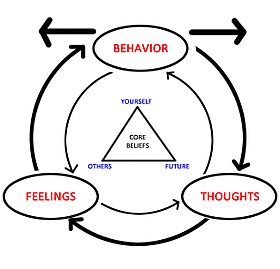How Panic Disorder Severity Scale is Used in Panic Disorder Therapy
by Barb Gombosi
Different people with panic disorder display different number of symptoms. Also, the severity of symptoms may vary from person to person. Therefore, it is important for clinician to assess the severity of individual’s symptoms when they struggle with panic disorder or panic disorder symptoms.
The Severity Measure for Panic Disorder - for Adults Only
Being aware of the severity of the symptoms of panic disorder can aid clinicians in deciding about their approach in the therapy sessions with their clients and to monitor their clients’ treatment progress.
One of the measures that assesses the severity of symptoms of panic disorder is called The Severity Measure for Panic Disorder – Adult.
According to the American Psychiatric Association (APA), The Severity Measure of Panic Disorder can be only used with adults that are 18 years of age or older.
Once an individual displays clinically significant panic disorder symptoms or receives the diagnosis of panic disorder, he or she needs to complete this measure so the clinician can monitor the severity of his or her symptoms throughout the treatment process.
The Severity Measure for Panic Disorder - Adult is made of 10 items.
Each item
asks the individual to rate the severity of his or her panic disorder
symptoms during the past week, more specifically, during the past 7
days.
To portray a better picture of this measure, the questions in the measure ask about thoughts, feelings, and behaviors about panic attacks that individual has experienced in the past 7 days.
At the beginning, the measure includes instructions for the individuals who are completing the measure and also gives them a definition of a panic attack like this:
“A panic attack is an episode of intense fear that sometimes comes out of the blue (for no apparent reason). The symptoms of a panic attack include: a racing heart, shortness of breath, dizziness, sweating, and fear of losing control or dying.”
Then the individual is asked to respond to each item by marking one of the check boxes per question.
Each item on the measure is rated on a 5-point scale where
- 0 =Never;
- 1 = Occasionally;
- 2 = Half of the time;
- 3 = Most of the time,
and
- 4 = All of the time.
After the individual answers all the question, the clinician scores the measure.
The total score can range from 0 to 40, where the higher score indicates the greater severity of panic disorder.
Severity of the Individual’s Symptoms of Panic Disorder
The total score of the measure allows the clinician to think of the severity of the individual’s symptoms of panic disorder in terms of
- none (0),
- mild (1),
- moderate (2),
- severe (3), or
- extreme (4).
In order to monitor the changes in the severity of the individual’s symptoms of panic disorder over time, it is vital that the measure is completed frequently.
For example, when an individual completes the measure at the beginning of the therapy process, this can be compered to his later results and his or her severity of symptoms can also be an indicator whether the therapy sessions are effective or not.
You Can Download an Example of Panic Disorder Severity Scale Self Report Form at GoodMedicine.org.uk
After the clinician administers The Severity Measure for Panic Disorder – Adult, scores the measure, and see the results of the measure, he or she needs to decide...
...and use his or her clinical judgement whether the further assessment, treatment, and follow-up are needed with the individual who completed the measure.
It is always beneficial for the clinician to use measures that help monitor the severity of clients’ symptoms, which can be used as the guidance in their therapy sessions.
Also, close monitoring of the symptoms through the frequent administration of the measures can quickly point out changes in the client’s symptoms.
Paying close attention to the symptoms can notify the clinician about the changes so he or she can properly adjust the therapy approach or changes the treatment if necessary.
It should be noted that, people do not receive diagnoses of panic disorder or any other mental health disorder according to only one questionnaire or measure.
Rather, there is a battery of several tests and assessments that are administered, in addition to the clinical interview, by a qualified mental health professional.
There are a lot of overlapping symptoms of different diagnoses and using several different measurements and assessments when diagnosing clients can help clarify the diagnoses and avoid misdiagnosing individuals.
Barb Gombosi, M.S., LMLP is a Licensed Masters Level Psychologist


